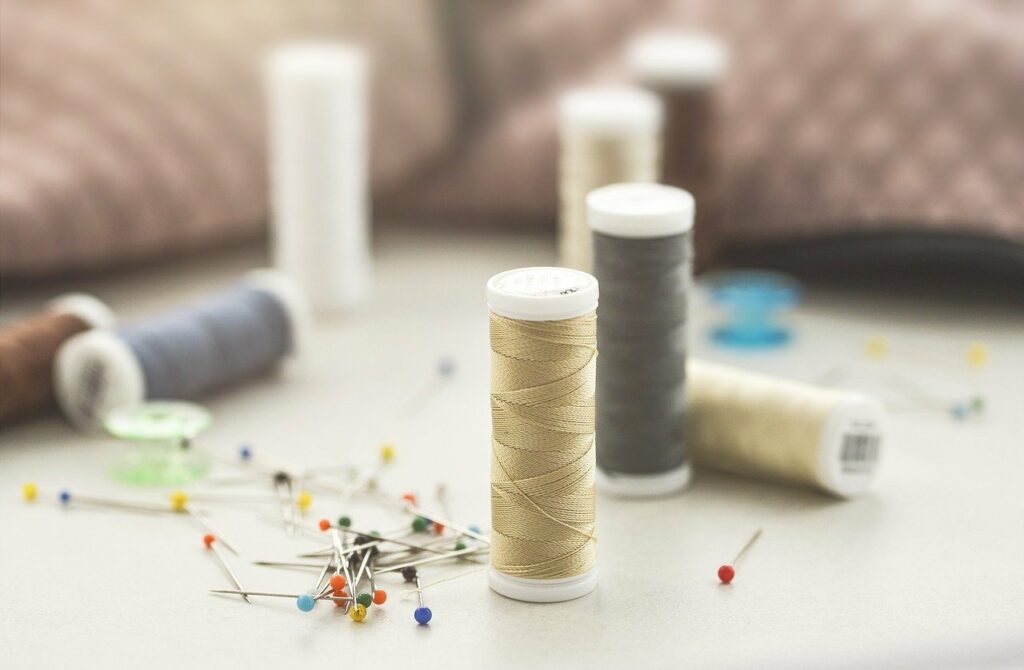If you’re a crafty or creative person, you’ve likely had tons of people ask you if you could make them something exactly like one of your previous creations. Therefore, it’s no secret that all creative people have flirted with the idea of monetizing our hobbies.
Monetize Your Skills
While it would be lovely if we could knit, bake, paint, or craft all day for the sheer love of it, the truth is that craft supplies aren’t free, and our capabilities require a lot of time and effort. If you’re going to make a hat for every single one of your coworkers, then you definitely want to get paid for it!
But let’s take that idea a step further: what if you started a full-blown craft business from home?

As in, you made your creations a source of income. What would that look like? What would that entail? Is it a good idea?
Read on to learn how to start a craft business from home. There are a lot of steps between having a great idea and turning it into a profitable business, so let’s look at what you’ll need to know.
Step 1: Define Your Business
The first step is going to require the most research and introspection. While you can absolutely sell one-off hats, brownies, paintings, etc to your friends, family, and coworkers, making an actual business out of your crafts is going to require a lot of organization and many tough decisions.
Set the Scope
First, think very carefully about why you want to do this, and to what extent. Do you want to create an actual viable stream of income, or do you want something to do with all of the extras you create out of your passion for the project itself?
Some people feel that the trickiest thing about creating a business is figuring out what you want out of it. If, for example, you’re a knitter who always seems to have a bunch of finished projects lying about because you truly love knitting and crafting, then you might prefer to sell your spare items through a third party site like Etsy, Ebay, Amazon, or Facebook.

Generally speaking, these outlets require nothing more than a profile and adherence to the terms of services, which may include fees for listing and exposure.
You can also gain some extra visibility and traffic by promoting your creations on Pinterest. If you want to learn more, have a look at this article here.
On the other hand, if you’re really serious about your baking, and you’d really like to take a shot at making money doing what you love, you might instead prefer to create your own website to allow customers to order your products directly from you.
In this case, you might want to establish an LLC, get a federal tax ID number, and explore the requirements for creating an independent business. You’ll need to take care of your own marketing and customer service, too. Are you ready for these steps?
Read also: How to choose a Business Name for your Startup
Develop further
Next, consider what you want to sell. Remember, you’re going to be making all of these items by hand, so your time, equipment, money, and talent should be carefully considered here.
If your speciality is sugar cookies, it might not be a good idea to take on a customer who wants a ten-tier wedding cake, unless you specifically know that’s something you can create to their expectations.
Finally, check out the competition. Google your product. Look it up on Ebay, Etsy, Amazon, Pinterest, and Facebook.
See if you can find any forums for others who have a similar craft business. What are people buying? How much are they willing to spend? What makes your crafts different? What inspires you? What range of products do others in your niche provide?
These are all questions to ask yourself as you continue to define your business. It may also be interesting to find more about your target audience. We have covered this subject in this article.
Step 2: Budget Everything
Unless you are creating your products strictly from found objects, you’ll need to make sure you can afford all of the supplies required for your crafts.

That includes equipment, the raw product itself, and any adjacent supplies. For example, a painter will of course need paint and a canvas, but also brushes, a palette, an easel, drop clothes, turpentine, lights, and more, depending on the type of painting and their setting.
When looking for supplies, make sure you shop around to discover the best deals. You may find that your personal favorite brand isn’t necessarily the most cost-effective option for business-level production of your craft.
Take also this cost in consideration…
You’ll also need to ship things, unless you plan to meet your customers in person for pick up. Shipping things requires adequate packaging as well as postage.
If your product is particularly fragile, you’ll want to make sure you know how to package it for the journey, which might incur an additional cost.
Shipping costs are usually determined by weight, as well, so you’ll need to do some research to get a feel for the most cost-effective and reliable shipping option in your area.
Final assessments…
At this point, look at what the cost per product is going to actually be, and compare that to the prices you see your competitors charging. Are you in the same ballpark?
The last thing to budget is your time. In many cases, a craft business starts as a side hustle. While side hustles can be fantastic sources of income, make sure that you’ll be able to complete and ship your crafts in a reasonable amount of time.
You’ll also need to dedicate a certain amount of time to marketing, which may be as minimal as an occasional social media post saying “check out my shop on Etsy!” or may require ads, photography, site building, and more.
Read also: Marketing with a limited budget
Step 3: Continuously Monitor Your Progress
As your business grows, stay organized and aware. That goes for your financial records, sales, shipments, and customer feedback, as well as your own state of mind.

As time goes by, do you still love your craft and feel passionate about it? Are you taking the time to continue to learn and grow your skills? Or has it started to feel like a chore, and you look forward to it with the same mixed emotions as you did your previous job?
Remember, if you start a craft business from home, you are in charge. If it becomes too expensive or too much of a sacrifice, you can explore other options.
Don’t let your income from your hobby make you forget how much you truly love working on your projects. While turning your favorite craft into a hobby can be a great idea, don’t forget why you started this in the first place.
Make sure you’re aware of your time, energy, and finances, and above all, enjoy yourself while creating your perfect craft business from home!









